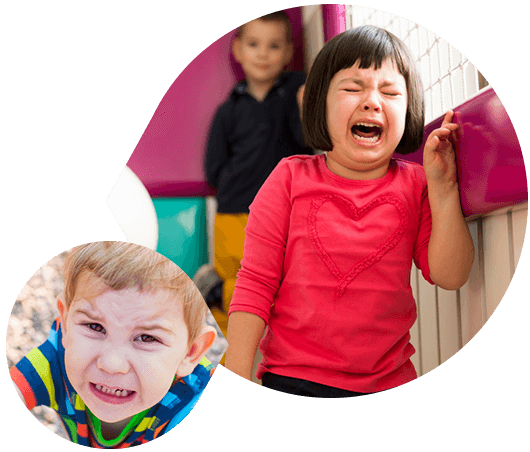
Tantrums or meltdowns can be challenging to manage. Often, they’re a developmental phase but sometimes they prove particularly intense or persist longer than is age-appropriate. Brain-based therapies may offer a way to support your child.
A child in the grip of a tantrum might:
These are all part of a stress response. Your child probably has a racing heartbeat, sweaty palms and tense muscles.
You probably do too! When your child is having a tantrum, your own stress response tends to kick in. You may feel angry, anxious or embarrassed – especially if your child has chosen a public venue for their tantrum.
We can answer that on two levels. There’s the surface-level trigger and the deeper processes going on in your child’s brain.
Some triggers can be quite amusing (once you’ve had time to recover!). When Buzzfeed asked parents for the most illogical reason their child had thrown a temper tantrum, responses included:
Other triggers include your child being overtired or overstimulated (a tantrum may hit at the end of a birthday party, for example).

Within the brain, a tantrum involves the amygdala and the hypothalamus. The amygdala processes emotions like fear or anger. The hypothalamus’s main job is to keep you nice and steady. Different parts of your body send signals to it and, if anything’s unbalanced, your hypothalamus takes action to restore balance. When it receives information that you’re too hot, for example, it’ll make you sweat so you cool down.
When your child’s brain receives information that they’re under threat (which is how they might perceive being denied the chance to pour apple juice on the cat!), the hypothalamus steps in. If it responds by flooding your child’s body with stress hormones like adrenaline and cortisol then you’re likely to be on the receiving end of a tantrum.
Now, adults experience no shortage of frustrating situations but with one crucial difference – a more mature prefrontal cortex. This part of the brain doesn’t fully develop until adulthood but it’s the part that helps you calm down and deal with difficult situations more rationally and productively (most of the time…).

You can help your child by:
The terms are sometimes used interchangeably but any parent of an autistic child would say there’s a big difference between the two.
Tantrums are a common part of childhood, affecting both neurotypical and neurodiverse children. They tend to stem from frustration – your child wanted something and didn’t get it.
A meltdown is a reaction to feeling completely overwhelmed. It’s an intense – and sometimes long-lasting – reaction to too much external stimulus, which your child is now attempting to regulate.
![]() As Autism Parenting Magazine notes, “Parents of autistic children often are told by parents of neurotypical children that their child’s behavior is “normal” and offered discipline advice for curbing meltdowns. These well-meaning people do not understand that discipline and good parenting techniques may help with classic temper tantrums, but meltdowns are not stopped with good parenting techniques and discipline strategies.”
As Autism Parenting Magazine notes, “Parents of autistic children often are told by parents of neurotypical children that their child’s behavior is “normal” and offered discipline advice for curbing meltdowns. These well-meaning people do not understand that discipline and good parenting techniques may help with classic temper tantrums, but meltdowns are not stopped with good parenting techniques and discipline strategies.”
At Neurofit Brain Centre, we believe that brain activity makes an active difference. The brain responds to the different kinds of stimulation it receives and, with the right input, it can learn to develop new pathways and connections.
We provide that input. Our toolkit includes many evidence-based therapies designed to stimulate the chosen area of the brain. Often, we’ll use several of these at once (co-activation) giving your child’s brain the maximum opportunity to form new neural pathways and strengthen itself.


©2023 Neurofit Brain Centre – All Rights Reserved | Privacy Policy
Website built by Splice Marketing